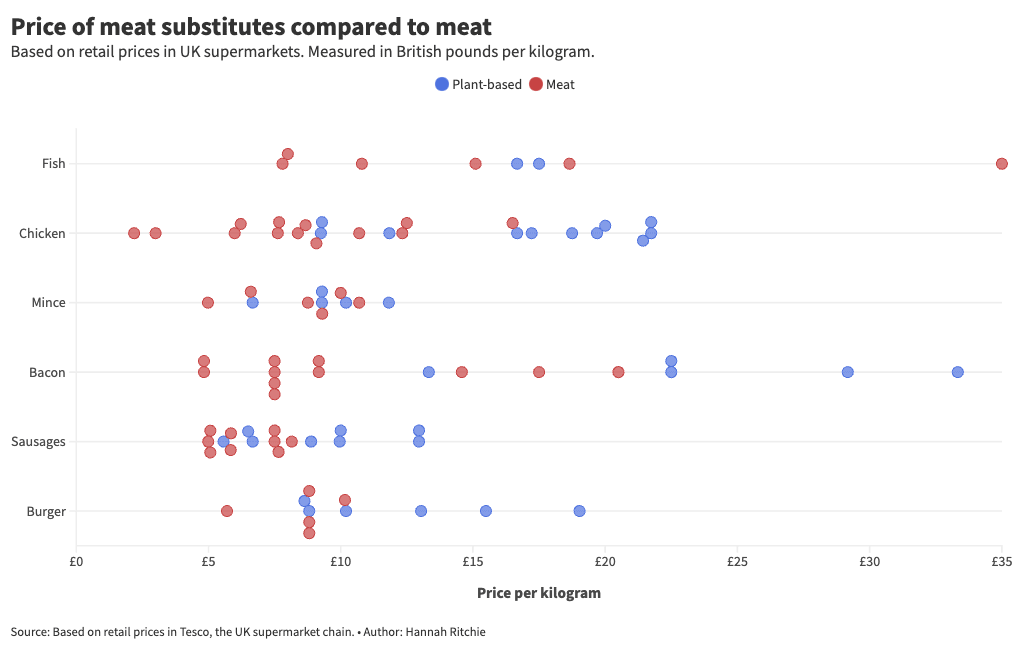JamesÖz
Bio
Currently grantmaking in animal advocacy, at Mobius. I was previously doing social movement and protest-related research at Social Change Lab, an EA-aligned research organisation I've founded.
Previously, I completed the 2021 Charity Entrepreneurship Incubation Program. Before that, I was the Director & Strategy lead at Animal Rebellion + in the Strategy team at Extinction Rebellion UK, working on movement building for animal advocacy and climate change.
My blog (often EA related content)
Feel free to reach out on james.ozden [at] hotmail.com or see a bit more about me here
Posts 30
Comments256
Can you unpack your thinking on the complentarities of AP chicken and beef a bit more? My hunch is that the cost differential between beef and chicken is relatively pretty big e.g. the cheapest chicken costs around £2.5/kg and the cheapest mince is £5/kg (see photo and data below from Hannah Ritchie) so the former is just extremely hard to compete with. As such, I think it's very plausible/likely that we'll get price parity alternative proteins for the cheapest beef but maybe not with the cheapest chicken, in contrast to your comment.
Additionally, there are effects like:
- Companies are much more likely to try to compete with beef as price parity is more plausible, so there's more innovation, talent and competition there, which makes the likelihood of reaching price parity higher.
- Innovations that help beef won't necessarily spillover into improving chicken products (e.g. mince is much easier to make than whole-cut chicken, there is no need for the iron/heme taste in chicken, etc.)
So overall I'm not convinced that the carbon tax is net good for animals as the complementarities between chicken and beef don't seem that great. Curious to hear more though on your thoughts on this.

This isn’t true for any of the other sub-focus areas that will be exited though, which I thought was strange. Given that nothing other than digital minds work was listed, how would any potential donors or people who know potential donors know about OP exiting things like invertebrates or wild animal welfare?
(I’m basing those sub-focus areas on the comments in this thread because of exactly this problem - I’m unclear if there’s more being exited or if those two are definitely part of it)
Mobius (the Bay Area-based family foundation where I work) is exploring new ways to remove animals from the food system. We're looking for a part-time Program Manager to help get more talented people who are knowledgable about farmed animal welfare and/or alternative proteins into US government roles. This entrepreneurial generalist would pilot a 3-6 month program to support promising students and early graduates with applying to and securing entry-level Congressional roles. We think success here could significantly improve thoughtful policymaking on farmed animal welfare and/or alternative proteins. You can see more about the role here.
Key details on the role:
- Application deadline: Tuesday 28th of May, at 23:59pm PT. Apply here.
- Contract: 15-20 hours per week for 3-6 months, with the possibility of extending.
- Location: Remote in the US.
- Salary: $29-38 per hour (equivalent to approx. $60,000-$80,000/year) depending on experience. For exceptional candidates, we’re happy to discuss higher compensation. This would be a contractor role, with no additional benefits.
Please share with potentially interested people!

Fixed! Thanks for flagging this